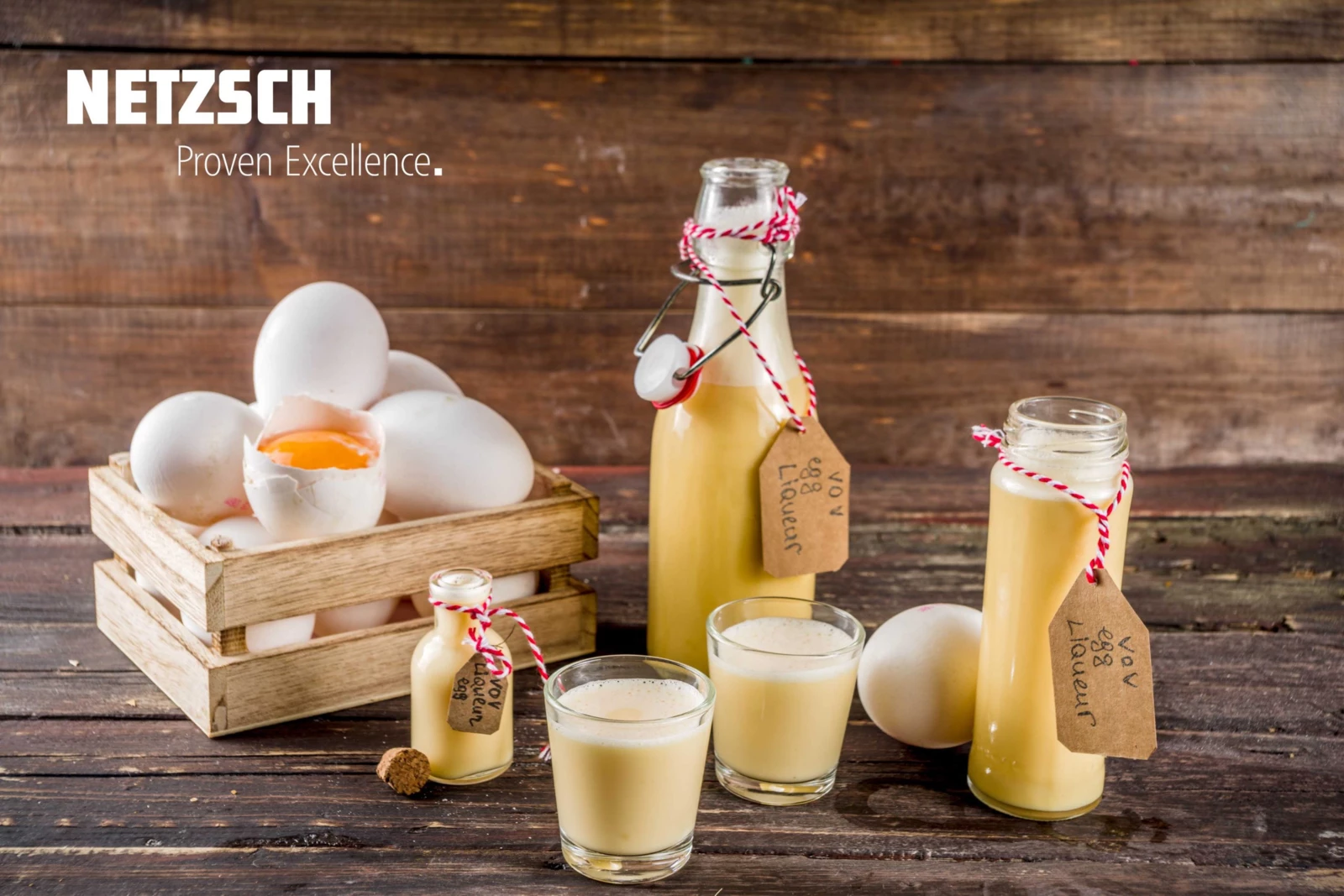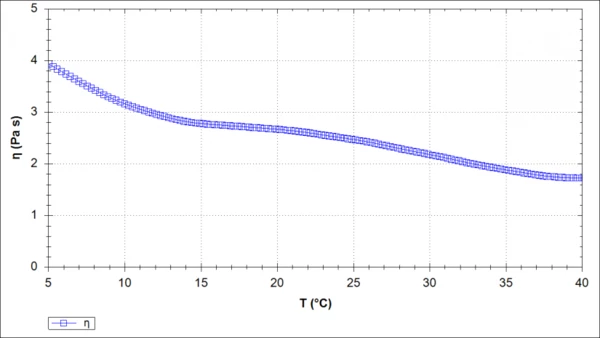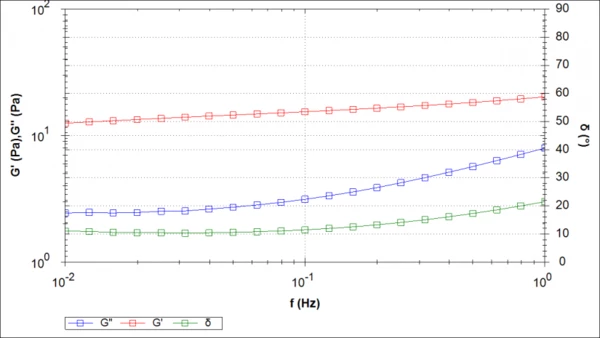
06.12.2021 by Claire Strasser, Aileen Sammler
About the Rheology of Egg Liqueur
Egg liqueur is an especially popular drink at Christmas and should be stored in a dark and cool place. Temperature is one of the most important factors influencing a material’s viscosity. So, is it okay to store egg liqueur in the refrigerator? We measured the rheological properties of egg liqueur.
Egg liqueur is an especially popular drink at Christmas. It consists mainly of alcohol, egg yolk and sugar and should – according to common practice – be stored in a dark and cool place, if possible. But is it really okay to store egg liqueur in the refrigerator? What happens when the delicious sweet drink has already been opened and stored at room temperature? Does it change its consistency if it is kept for a longer period of time? Rheology deals with the deformation and flow behavior of materials. The higher the viscosity, the thicker it is, i.e., less the egg liqueur flows more slowly. The lower the viscosity, the thinner it is, and the faster it can flow. We measured the rheological properties of egg liqueur in the temperature range from 5°C to 40°C:
How Does Storage in the Fridge Affect the Viscosity of Egg Liqueur?
Temperature is one of the most important factors influencing a material’s viscosity. The following measurement shows how storage in the fridge has an impact on the viscosity of egg liqueur in comparison to storage at (higher) room temperatures.
The shear viscosity of egg liqueur was measured during a temperature change between 5°C and 40°C. Figure 1 depicts the resulting curve. At 5°C, the shear viscosity is 4 Pa·s. As expected, this value continuously decreases during heating to 40°C. However, the difference in shear viscosity at 5 and at 40°C is not high enough to cause a big change in mouth feel, no matter if the product is stored in the fridge or at room temperature. The feeling of a “chilled” drink has probably much greater influence on the taste than the viscosity change when the egg liqueur is stored in the fridge for a while.

Long-time Stability and Segregation: The Frequency Sweep
During storage, the egg liqueur should remain stable, i.e., homogeneous: Phase separation of the different components would affect the product. Information about the phase stability is gained by means of a frequency sweep.
First, an amplitude sweep is carried out in order to determine the range of strains that can be applied on the sample without leading to a breakdown of its structure (Figure 2). This range is called the linear visco-elastic range (Linear Viscoelastic Region (LVER)In the LVER, applied stresses are insufficient to cause structural breakdown (yielding) of the structure and hence important micro-structural properties are being measured.LVER). As long as G´ remains constant, breakdown of the sample´s structure does not occur. For the following frequency sweep, a StrainStrain describes a deformation of a material, which is loaded mechanically by an external force or stress. Rubber compounds show creep properties, if a static load is applied.strain of 0.3% was selected.

Prior to the frequency sweep measurement, the egg liqueur was heated and cooled three times between 5°C and 50°C. This thermal treatment ensured that the following statement on the long-time stability is not influenced by storage in the fridge or at higher room temperatures than the 25°C employed for the measurement.

The frequency sweep applied on the egg liqueur (Figure 3) shows that the elastic shear modulus G´ is higher than the viscous shear modulus G´´ over the entire frequency range measured. This means that for these time scales, egg liqueur is a visco-elastic solid! The “solid-like” properties dominate the “liquid-like” properties. This solid-like behavior is an indication that the product is stable under rest conditions and that no phase separation occurs.
Well then, cheers and enjoy!